Related Research Articles

Balash was the Sasanian King of Kings of Iran from 484 to 488. He was the brother and successor of Peroz I, who had been defeated and killed by a Hephthalite army.

Arsaces I was the first king of Parthia, ruling from 247 BC to 217 BC, as well as the founder and eponym of the Arsacid dynasty of Parthia. The leader of the Parni, one of the three tribes of the Dahae confederacy, Arsaces founded his dynasty in the mid-3rd century BC when he conquered the satrapy of Parthia from Andragoras, who had rebelled against the Seleucid Empire. He spent the rest of his reign consolidating his rule in the region, and successfully stopped the Seleucid efforts to reconquer Parthia. Due to Arsaces' achievements, he became a popular figure amongst the Arsacid monarchs, who used his name as a royal honorific. By the time of his death, Arsaces had laid the foundations of a strong state, which would eventually transform into an empire under his great-grandnephew, Mithridates I, who assumed the ancient Near Eastern royal title of King of Kings. Arsaces was succeeded by his son Arsaces II.

Mazdakism was an Iranian religion, which was an offshoot of Zoroastrianism. The religion has been called one of the most noteworthy examples of pre-modern communism.

Phraates II was king of the Parthian Empire from 132 BC to 127 BC. He was the son and successor of Mithridates I.

Arsaces II, was the Arsacid king of Parthia from 217 BC to 191 BC.
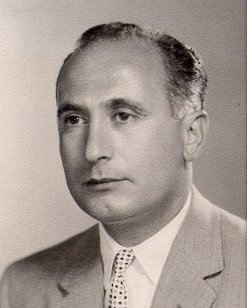
Ehsan Yarshater was an Iranian historian and linguist who specialized in Iranology. He was the founder and director of The Center for Iranian Studies, and Hagop Kevorkian Professor Emeritus of Iranian Studies at Columbia University.

The Kakuyids were a Shia Muslim dynasty of Daylamite origin that held power in western Persia, Jibal and Kurdistan. They later became atabegs (governors) of Yazd, Isfahan and Abarkuh from c. 1051 to 1141. They were related to the Buyids.

Andragoras was an Iranian satrap of the Seleucid provinces of Parthia and Hyrcania under the Seleucid rulers Antiochus I Soter and Antiochus II Theos. He later revolted against his overlords, ruling independently from 245 BC till his death.
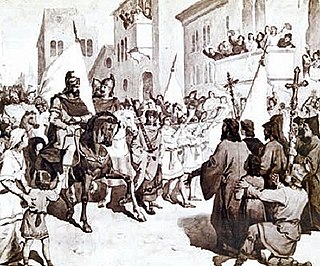
The Treaty of Nvarsak was signed between the Armenian rebel leader Vahan Mamikonian and the representatives of the Sasanian King of Kings (shahanshah) Balash at Nvarsak in 484.
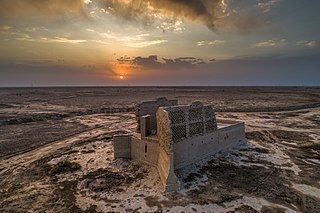
Sistān, also known as Sakastān and Sijistan, is a historical and geographical region in present-day south-eastern Iran, south-western Afghanistan and north-western Pakistan. Largely desert, the region is bisected by the Helmand River, the largest river in Afghanistan, which empties into the Hamun Lake that forms part of the border between Iran and Afghanistan.

Meshan was a province of the Sasanian Empire. It consisted of the Parthian vassal kingdom of Characene and reached north along the Shatt al-Arab river and then the lower Tigris to Madhar and possibly further. Its inhabitants included Babylonians, Arabs, Iranians, and even some Indians and Malays. The province was very fertile, the best place for barley according to Strabo, and contained many date palms. It was also an important trading province along the Persian Gulf.
Amazasp III or Hamazasp I was a king of Iberia from 260 to 265 AD. According to Cyril Toumanoff he may have been a scion of the Pharnavazid dynasty, while Richard N. Frye states that he was an Iranian, possibly related to the royal Sasanian family.

Parthia is a historical region located in northeastern Greater Iran. It was conquered and subjugated by the empire of the Medes during the 7th century BC, was incorporated into the subsequent Achaemenid Empire under Cyrus the Great in the 6th century BC, and formed part of the Hellenistic Seleucid Empire after the 4th-century BC conquests of Alexander the Great. The region later served as the political and cultural base of the Eastern Iranian Parni people and Arsacid dynasty, rulers of the Parthian Empire. The Sasanian Empire, the last state of pre-Islamic Iran, also held the region and maintained the seven Parthian clans as part of their feudal aristocracy.
Khwadāy-Nāmag was a Middle Persian history from the Sasanian era. Now lost, it was imagined by Theodor Nöldeke to be the common ancestor of all later Persian-language histories of the Sasanian Empire, a view which has recently been disproven. It was supposed to have been first translated into Arabic by Ibn al-Muqaffa', who had access to Sasanian court documents. According to Nöldeke's theory, the book itself was composed first under the reign of Khosrow I Anushirvan, and redacted in the reign of the last Sasanian monarch, Yazdegerd III. Khwaday-Namag was the primary source of the 10th-century Persian epic Shahnameh written by Ferdowsi. Khwaday-Namag was also translated to New Persian, and was expanded using other sources, by Samanid scholars under the supervision of Abu Mansur Mamari in 957, but only the introduction of this work remains today.
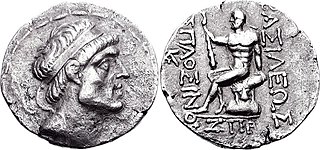
Hyspaosines was an Iranian prince, and the founder of Characene, a kingdom situated in southern Mesopotamia. He was originally a Seleucid satrap installed by king Antiochus IV Epiphanes, but declared independence in 141 BC after the collapse and subsequent transfer of Seleucid authority in Iran and Babylonia to the Parthians. Hyspaosines briefly occupied the Parthian city of Babylon in 127 BC, where he is recorded in records as king (šarru). In 124 BC, however, he was forced to acknowledge Parthian suzerainty. He died in the same year, and was succeeded by his juvenile son Apodakos.
Eran-asan-kerd-Kawad or Iran asan kar(t) Kavad was a Sasanian city founded by Kavad I in the Hulwan region. It was the capital of a province possibly identical to the Hulwan region and bordering the provinces of Syarazur (Shahrizor) and Garamig. The geographer Josef Markwart placed the city between Adiabene and Garamig. It is mentioned in both Armenian sources and the Middle Persian Šahrestānīhā ī Ērānšahr.
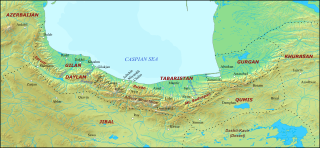
Ruyan, later known as Rustamdar (رستمدار), was the name of a mountainous district that encompassed the western part of Tabaristan/Mazandaran, a region on the Caspian coast of northern Iran.

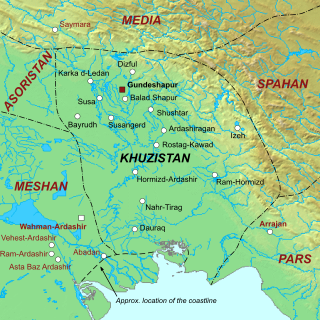
Khuzistan or Huzistan was a Sasanian province in Late Antiquity, which almost corresponded to the present-day province of Khuzestan. Its capital was Gundeshapur. During the late Sasanian era, the province was included in the southern quadrant (kust) of Nemroz.
References
- Fisher, William B., Ilya Gershevitch, Ehsan Yarshater, Richard Nelson Frye, John Andrew Boyle et al. (1968-1991). The Cambridge History of Iran. Cambridge : Cambridge University Press. OCLC 745412